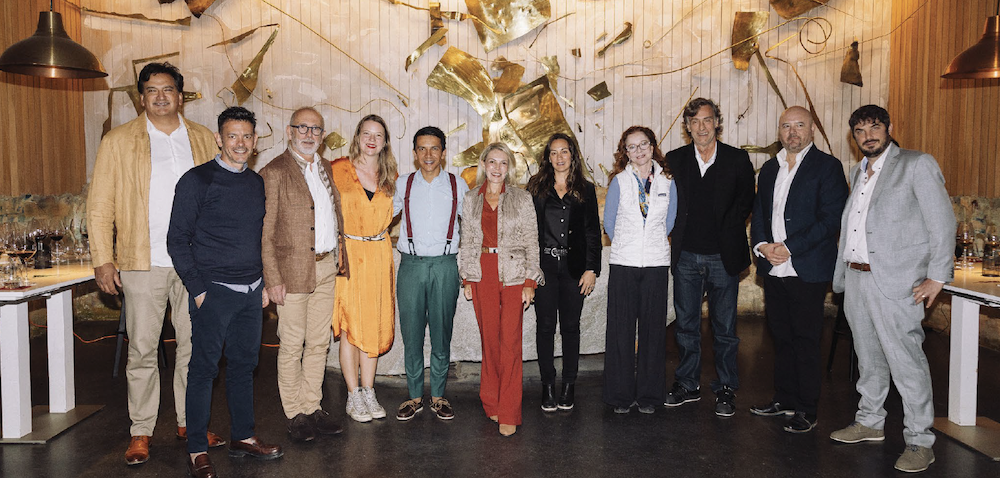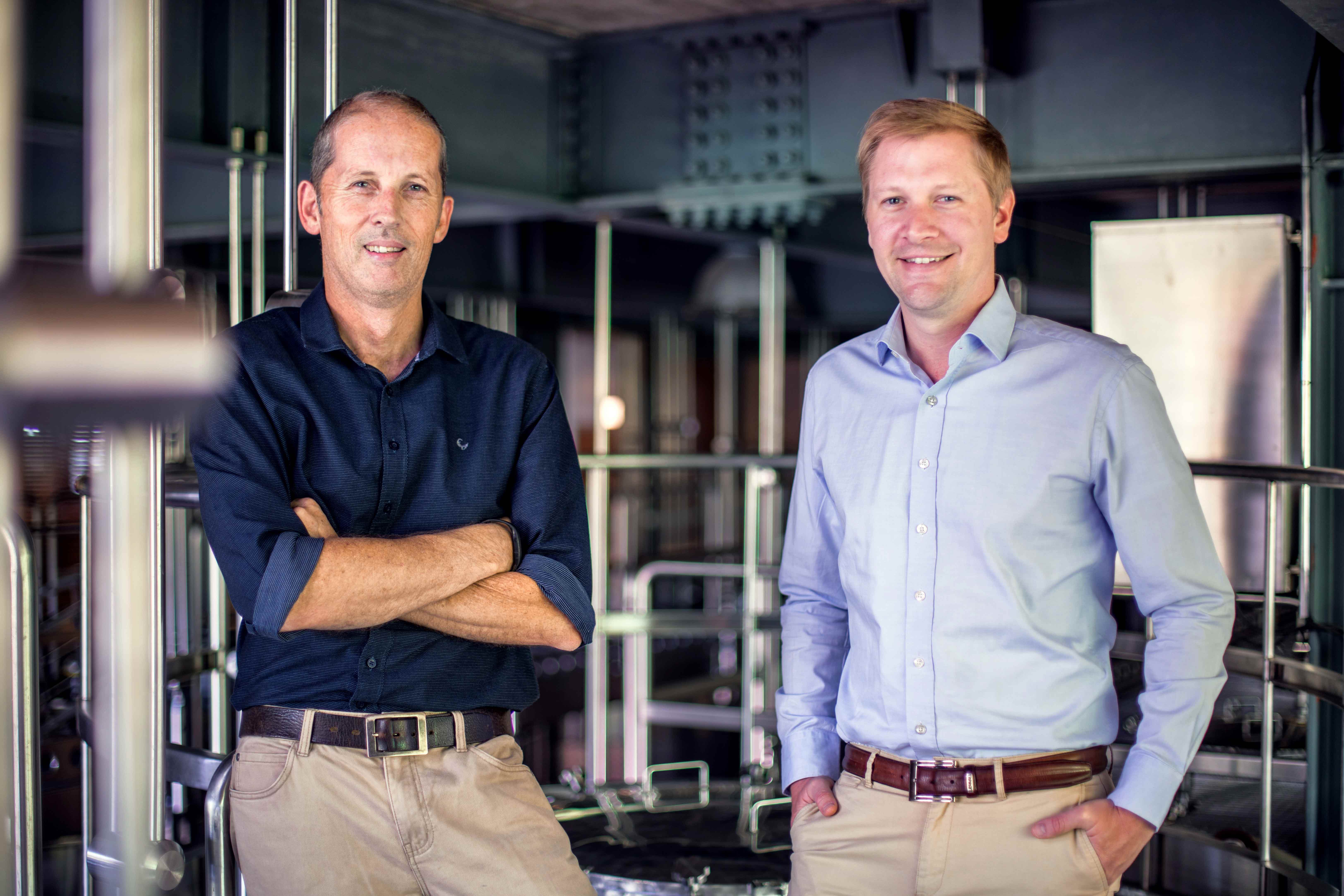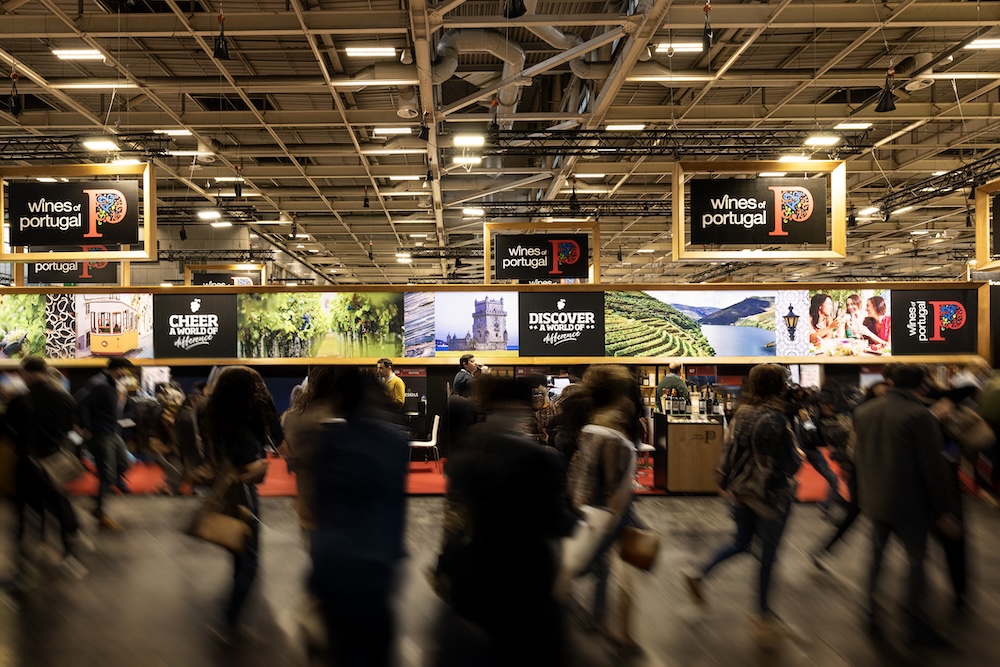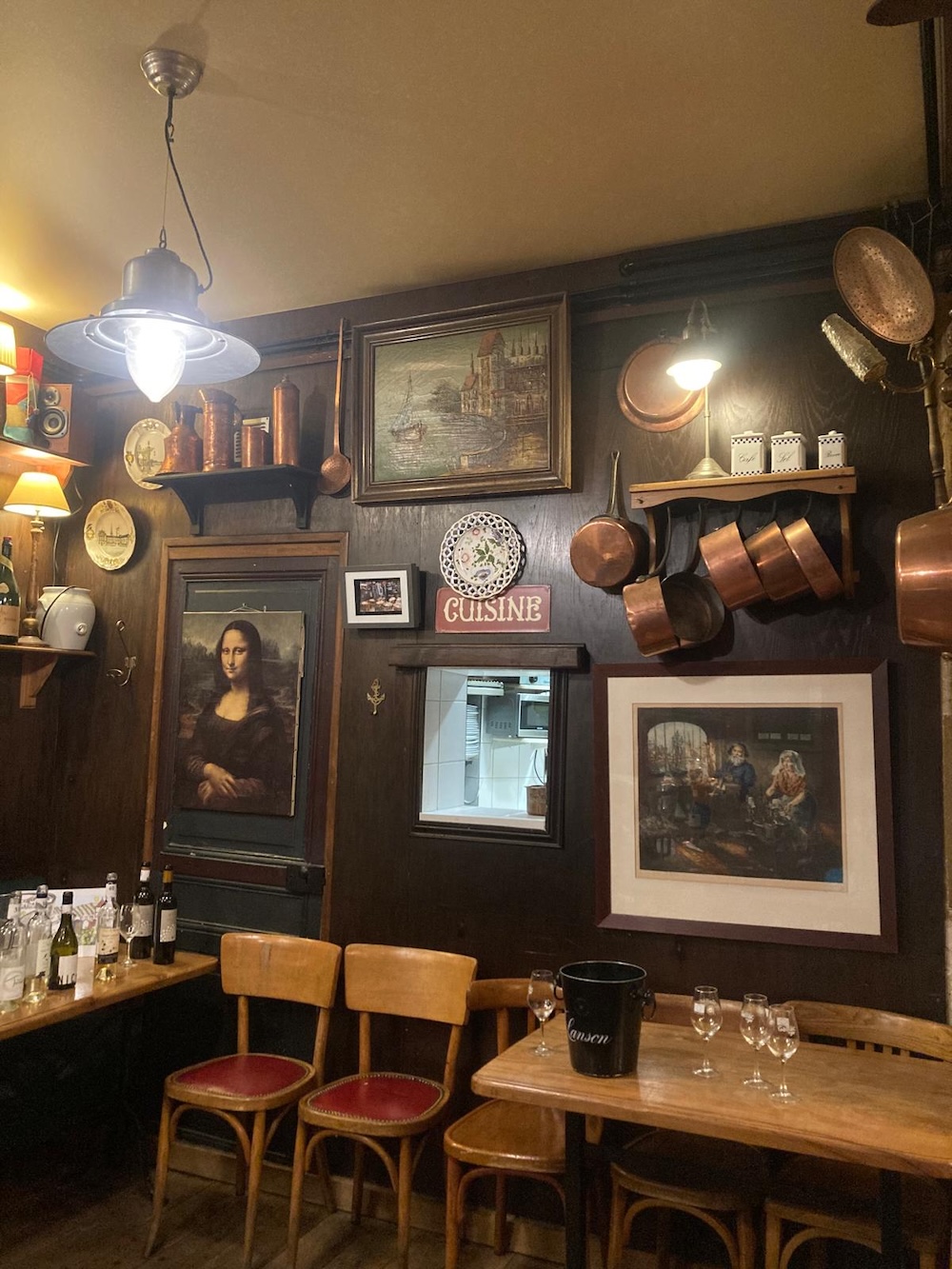
Discovery

Discovery
By Joanne Gibson - Photographs: courtesy of the producers, posted on 31 January 2022
Boasting a 350-year history of brandy production and a wealth of award-winning brands, South Africa’s premium distillers are confident that Cape Brandy can finally emerge from the shadow of Cognac.
Next year will mark exactly 350 years since the first documented distillation of brandy took place in South Africa (SA). On 19 May 1672, the assistant cook aboard a Dutch ship anchored in Table Bay succeeded in transforming two half leggers (575 litres) of Cape wine into three ankers (126 litres) of ‘very delicious brandy’.
Just as Dutch merchants played a key role in the development of Cognac during the 17th century, discovering that the double-distillation of wine followed by its storage and/or transport in wooden casks not only preserved it but made it smoother and more delicious, so too did they encourage the production of brandewijn at the Cape, their refreshment station en route to and from the East.
Fast forward to modern times and there can be no doubt that SA produces a world-beating spirit. ‘We win the major international trophies most of the time,’ claims the Cape Brandy Distillers Guild, which was established five years ago to provide a provenance-driven platform for SA’s finest potstill brandies. Although these currently make up just a fraction of SA’s total brandy production – only 5% – it’s no exaggeration about the trophies. At the annual International Wine & Spirit Competition, SA producers have won the coveted Worldwide Brandy Trophy no fewer than 16 times in two decades. At the International Spirits Challenge, one producer alone – KWV – has been named Brandy/Cognac Producer of the Year four times since 2015.
‘I believe what differentiates our brandies from other brandies are our world-class production methods,’ says KWV spirits manager Pieter de Bod. ‘Our production regulations are among the strictest in the world.’

SA’s finest potstill brandies, which now have the exclusive right to be labelled as Cape Brandy, are produced in exactly the same manner as Cognac, which is to say they are 100% double distilled in copper potstills, then aged for a number of years in oak barrels (these may be no larger than 340 litres for at least the first three years). However, SA’s minimum age terms are longer than those in France. ‘Our minimum three years’ maturation is more than the two‐year minimum for entry-level Cognac,’ says Christelle Reade-Jahn, director of the SA Brandy Foundation.
‘Cape Brandies are predominantly Colombard- and Chenin Blanc-based, while the main varietal in Cognac is Ugni Blanc, which yields a very neutral wine. Cognac generally gains its complexity from maturation, which is why they tend to use more new wood than we do in SA.
While Cape Brandy mirrors Cognac in its production techniques, however, it is proudly unique. ‘The difference lies in the base wines,’ says Danie Pretorius, master distiller at Oude Molen. ‘Cape Brandies are predominantly Colombard- and Chenin Blanc-based, while the main varietal in Cognac is Ugni Blanc, which yields a very neutral wine. Cognac generally gains its complexity from maturation, which is why they tend to use more new wood than we do in SA. Cape Brandies tend to be distilled and matured to preserve and enhance the complex fruit characteristics present in the base varieties. I believe that the sweet spot for a Cape Brandy is achieved at the point where these fresh fruit characteristics are complemented by maturation-derived aromas and flavours. This is usually achieved after 8-12 years of maturation.’

The generally warmer and drier SA climate plays a role, too, resulting in base wines with slightly more alcohol than in Cognac (10 to 12% versus about 8%). ‘We use fuller, fruitier base wines in the production of our brandies,’ says Marlene Bester, distillery manager at Van Ryn’s, which is Distell’s flagship and a consistent winner of prestigious international awards. ‘As a result, our brandies are much more fruity and complex in character, and this you find on the nose as well as on the palate.

Lower humidity than in France can cause the alcoholic strength of the spirit to rise further during barrel maturation due to higher evaporation. ‘Maturation of the distillate is sped up, thus giving us a smooth, well-balanced product,’ says De Bod. ‘We get the aged character a bit faster than producers in France or even Stellenbosch,’ says Andre Landman, winemaker at Die Mas van Kakamas, located in the hot, dry Northern Cape.
Just as Cognac is dominated by the likes of Martell, Hennessy, Rémy Martin and Courvoisier, SA brandy production is dominated by two companies: Distell (which produces several brands of blended brandies in addition to its flagship Van Ryn’s range of 10, 12, 15 and 20 Year Single Potstill Brandies) and KWV (whose core range consists of the 3 and 5 Year blended brandies and 10, 12, 15 and XXO 20 Year Potstill Brandies, in addition to Imoya VSOP). However, Oude Molen has emerged as a third major player, not only producing its own three-year-old VS, five-year-old VSOP and 10-year-old XO potstill brandies but also owning the independently operated Ladismith and Joseph Barry distilleries.

Oude Molen was started by René Santhagens, widely considered the Father of SA Brandy, a Dutch-born distiller who first established the Golden Lion Distillery at Vlottenburg in Stellenbosch in 1903 (today home to Van Ryn’s) before buying the Oude Molen farm under Stellenbosch’s Papegaaiberg in 1909. Here he embraced Cognac methods and produced fine brandy until his death in 1937, but in 2003 Oude Molen moved to much bigger and more modern premises in Elgin, where column stills sit opposite the beautiful copper potstills – including two of the largest copper potstills in the Southern Hemisphere (Big Bertha and Long Tom).

Master distiller Danie Pretorius is proud to have received a double gold medal from Gilbert & Gaillard not only for the ‘elegant and refined’ Oude Molen VSOP, but also for the XO Royal Cape Brandy that Oude Molen distils by appointment to the Zulu king as part of a range of products offered by Bayede! (a majority black-owned, women-managed company based in Paarl that provides employment opportunities). ‘The late King Goodwill Zwelithini wanted a spirit that was bold, textured and above all distinctive,’ says Pretorius. ‘We submitted a few samples and the one which was selected really is a standout. The Bayede! XO Royal Cape Brandy shows a distinctive hint of cloves and curry leaf on the nose, which I’ve never encountered on another brandy. The king loved it!’
Now owned by Oude Molen, the Ladismith Distillery founded in 1851 produces vast amounts of column-distilled brandy, but once a year a small potstill is fired up to distil just enough of the highest quality base wine that will eventually become the ‘classic’ Ladismith 8 Year Old Cape Brandy rated 90 by Gilbert & Gaillard.
Then there’s the Joseph Barry Distillery in Barrydale, which owes its name to a liquor tradesman who settled in the Swellendam area of the Klein Karoo in the 1820s. Frustrated that overland travel to the Cape was so slow, Barry deployed a fleet of riverboats to transport goods (including wine and brandy) along the Breede River. ‘Finely crafted in traditional Woudberg copper stills, each Cape Brandy in the range is a dedication to Barry’s maverick ways and ongoing quest for perfection,’ says Pretorius, delighted about double gold ratings for the ‘lengthy and layered’ VSOP (92) and the ‘delicate and refined’ XO (96).
Big as it may be, Oude Molen has joined the Cape Brandy Distillers Guild which mostly represents wine farms crafting small-volume potstill brandies – an exciting development in recent decades, spearheaded by the late Sydney Back of Backsberg in Paarl, who in the early 1990s lobbied for legislative change surrounding the production of estate potstill brandy. Determined to produce a spirit equivalent to the great Cognacs, Back sought advice from Rémy Martin and imported an alembic potstill – and in 1995 he scooped the IWSC trophy for the Best Brandy in the World.
Along with winemaker Alicia Rechner, Back’s son Michael and grandson Simon have kept the brandy flame burning ever since, using early-picked Paarl Chenin to produce a base wine that is double-distilled and then matured in small Limousin barriques – the ‘excellent’ Sydney Back 10 scoring an impressing 94 points. ‘The pioneering spirit of Sydney well and truly shines through in each and every sip,’ says marketing manager Bianca-Joy Lenhardt, revealing that production will move to Franschhoek following producer-wholesaler DGB’s acquisition of a major stake in Backsberg.

DGB also owns historic Franschhoek estate Boschendal, where the development of a 10 Year Old Potstill Brandy (88 points) was seen as ‘a natural evolution’. Similarly, Distell-owned Durbanville Hills says its unusual Merlot Potstill Brandy (aged 10 years in French oak and finished in Merlot barrels) came about when cellarmaster Martin Moore was having lunch with spirits connoisseur Johan Venter, 11 years ago, and they suddenly wished they could finish the meal with a Durbanville Hills brandy (a good idea now validated by a 90-point rating).
Meanwhile, family-owned Tokara in Stellenbosch has released an XO Potstill Brandy made from Chenin Blanc, double distilled in a Pruhlo alembic potstill, then aged in 300-litre Limousin oak casks for up to 16 years (91 points). ‘Being a small operation and having such incredible equipment at our disposal allows us to keep small batches of fine spirits separate,’ says winemaker Stuart Botha. ‘These batches are then selected to make a rich and distinctive blend.’

Blaauwklippen, Groot Constantia, Windfall and Withington Wines are just a few of the wine producers that have joined the Cape Brandy Distillers Guild, not to mention organic producer Upland whose brandy range includes a 10-year-old, 12-year-old, two limited-release 15-year-olds and SA’s first undiluted cask-strength (62%) brandy. ‘Working with such a committed bunch of distillers, knowing that with each and every one of them uncompromising excellence is part of their DNA, makes me feel both proud and privileged to be a custodian of Cape Brandy,’ says Charles Withington, a trustee of the Guild who produces his own seven-year-old potstill brandy named Voorkamer.
Another trustee of the Guild is Kobus Gelderblom, formerly the KWV’s chief brandy master and now an independent consultant to Oude Molen and several smaller distillers through his own company, Mountain Spirit: ‘The big guys – KWV and Distell – buy in most of their wines and they can select the best wines. The smaller wineries have only that certain cultivar that’s available. That’s their biggest challenge. A few years ago you could have differentiated a lot between the two, but now there is hardly any difference. The smaller guys are catching up.’

It’s interesting to note that excellent quality is also coming from the Northern Cape, a vast thirstland where thousands of hectares of vines grow along the Orange River, running through the so-called Green Kalahari. Sourcing grapes from 580 grape producers, Orange River Cellars has achieved an impressive 90-point rating for its Bontstaan VSOP, aged in French and American oak for five years and proudly stating 100% Potketel/Handgemaak (Afrikaans for Potstill/Handmade). Kobus Gelderblom is involved in the blending of Bontstaan, as he is with Die Kalahari Truffel, the potketelbrandewyn produced by another Orange River wine farm, Die Mas van Kakamas, owned by the Hanekom family. ‘Kobus is one of the best in the industry and we are very glad to have him as part of our brandy journey,’ says Die Mas winemaker Andre Landman. ‘We have a great team that works very hard to create and bottle the best. Anyone can follow a recipe but if you don’t have passion for what you do, you’ll never get to the top.’

‘I always say that when you taste a SA potstill brandy, you can taste the SA sunshine and the passion of our producers.’
‘The passion that our producers have definitely plays a role in constantly producing very high quality brandies,’ says Marlene Bester (Van Ryn’s). ‘I always say that when you taste a SA potstill brandy, you can taste the SA sunshine and the passion of our producers.’ United in their passion for Cape Brandy, defined by centuries-old techniques combined with the perfect marriage of terroir and craftsmanship, members of the Guild have spent five years lobbying the term ‘Cape Brandy’ to be legally recognised as a permissible alternative to ‘Potstill Brandy’, which describes the process but doesn’t necessarily sound very premium. In August 2021 they finally succeeded, with Danie Pretorius commenting: ‘We are very happy that the term Cape Brandy has now been taken up in the Liquor Products Act as an official descriptor for pot-distilled brandies from the Cape provinces. Legal recognition is the first step in building a premium, provenance-driven category for Cape Brandy, which is literally the best in the world.

Discovery

Discovery

Discovery